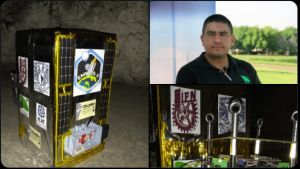Sometimes all you have to do is ask.
While I was in high school in Bogota, Colombia an entrance to an extensive cave system was discovered on a mining company’s land. It was only accessible by river. On a Friday afternoon I went to the Ministry of Mines and Petroleum, made my way to the Minister’s office, and asked for a letter of introduction. Amazingly, I walked out with government stationery addressed to all civil and military authorities asking that they assist me, and those accompanying me, in visiting the Cavernas del Río Nus!
That letter obtained for me and my two friends lodging at the Puerto Berrío army base on the Magdalena River, a motorboat ride to the mining camp near the caves, accommodations in their guest house, an escorted visit to the caves and a boat ride back to the river port. All for free.
But our caper pales in significance to what Alexander von Humboldt (1769-1859) pulled off. Like much in life, it was a matter of timing. In 1799, the 30-year-old Prussian explorer, geologist and geographer asked for and was given access to all of Spain’s possessions in the Western Hemisphere by a mere letter of introduction from the King of Spain, Bourbon Charles IV.
Under the previous Hapsburg reign, Spanish colonies were jealously guarded. An expedition by a foreign traveler and explorer like Humboldt would never have been sanctioned. The Bourbon monarchy, on the other hand, embraced the Age of Enlightenment and welcomed scientific exploration.
Traveling with his good friend, the medical doctor and biologist Aime Bonpland, Humboldt spent five years (1799-1804) tirelessly exploring and “measuring” the Americas. Their first stop was Venezuela. It was there he first saw and dissected electric eels. It inspired his theory about Earth’s magnetic poles — a theory he pursued for decades.
They traveled to Cuba. Humboldt’s trip was considered the “second discovery of Cuba” because of his scientific and social research. Though primarily a physical scientist, he compiled considerable statistics on Cuban sugar plantations and agriculture.
From 1801 to 1803 Humboldt traveled extensively in what are now Colombia, Ecuador, Bolivia and Peru. He and Bonpland were ardent hikers. In Ecuador they climbed and mapped Pichincha and Chimborazo mountains. Though they stopped 1,000 feet (300 meters) short of the summit of Chimborazo, they achieved a world-record height of 19,286 feet (5,900 meters).
In Peru, Humboldt studied fertilizing properties of sea bird droppings, which are rich in nitrogen and potassium. Wars were subsequently fought over access to such guano-rich islands.
In 1803 Humboldt arrived in Acapulco. As a link to Spain’s Asian trade with the Philippines, Acapulco’s location was vitally important. Humboldt realized the captain had incorrect navigational coordinates and immediately surveyed Acapulco Bay to correct the map.
Once again, letters of introduction paved Humboldt’s way. Viceroy José de Iturrigaray’s letter gave Humboldt access to all of New Spain (Mexico). Humboldt freely visited mines, plantations, canals and archaeological sites.
Humboldt loved Mexico City. In his work ‘Political Essay on the Kingdom of New Spain’ (1814), he expressed admiration for scientific establishments that he said were the best of any city in the new continents, including those of the United States. On their return trip to Europe, Humboldt and Bonpland visited the United States and met with many prominent scientists — including President Thomas Jefferson.
The Louisiana Purchase had been completed the previous year (1803) and the U.S. government was interested in its new southern neighbor. Spain refused to provide maps but Humboldt had excellent maps of New Spain which he willingly exchanged for accurate U.S. cartography. For Humboldt it was a scientific exchange. For the U.S. it likely whetted an appetite for more territory and mineral riches.
Humboldt participated in other expeditions in his life but none would have the same impact. He took prolific notes throughout his five-year adventure and was still utilizing the material 50 years later when he wrote his five-volume masterwork, ‘Cosmos: A Sketch of a Physical Description of the World.’
The first volume was completed when he was 76, the fourth when he was 89, the fifth posthumously. Called the last great work of the last universal man, ‘Cosmos’ was spectacularly received, though most critics still consider ‘Political Essay’ more important.
Humboldt was never forgotten in Mexico. Mexico’s first president, Guadalupe Victoria, granted him Mexican citizenship. In 1859 Benito Juárez named Humboldt a hero of the nation.
Charles Darwin revered Humboldt. He made frequent references to his predecessor’s observations in his own work, ‘Voyage of the Beagle’. Darwin gave credit to Humboldt’s ‘Personal Narrative’ for “Stirring up in me a burning zeal to add even the most humble contribution to the noble structure of the natural sciences.”
Streets, towns, schools, even universities are named after Alexander von Humboldt. Perhaps most impressive is an ocean current. With the onset of El Niño, the Humboldt Current will be much in the news.
Anthropologist and longtime Cuernavaca resident Charlie Goff can be reached at <[email protected]>. Carol Lamb Hopkins, Cuernavaca resident, former teacher and school administrator collaborates on this column. Previous Charlie’s Digs are posted at charliesdigs.com.










